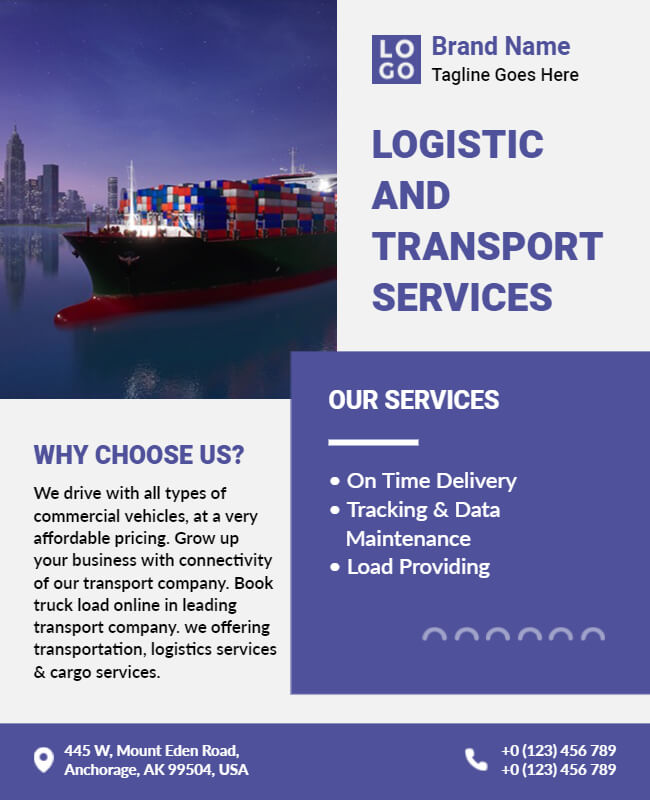Boost Your Company with Transit Advertising Philippines
Boost Your Company with Transit Advertising Philippines
Blog Article
Comprehending the Duty of Transit Marketing in Enhancing Brand Name Visibility and Customer Involvement
Transit marketing has actually become an essential element in the advertising landscape, supplying unique chances for brand names to elevate their exposure and involve customers effectively. With the capability to get to a restricted and varied audience during their everyday commutes, these advertising methods are not just regarding exposure; they are concerning developing purposeful connections with possible customers. As we explore the multifaceted benefits and ingenious techniques within transportation advertising and marketing, it becomes important to take into consideration how these elements collectively influence consumer perception and behavior, raising questions about their long-lasting effect on brand loyalty.
Meaning of Transportation Marketing
Transit advertising describes the technique of advertising items, services, or brands via advertisements positioned around public transport systems. This form of advertising incorporates a range of placements, including posters on trains and buses, electronic screens at transportation terminals, and wraps on the exterior of vehicles. It intends to reach a diverse target market, taking advantage of the high foot website traffic connected with public transit.
Transit marketing is tactically positioned to record the interest of commuters, that commonly spend substantial time taking a trip or waiting. By integrating advertisements right into the daily regimens of individuals, brand names can produce a lasting impact and foster brand acknowledgment. The medium is particularly reliable in metropolitan atmospheres, where public transportation is a key mode of traveling.
Additionally, transportation advertising can assist in localized targeting, permitting companies to get to specific demographics based upon transportation paths and terminal locations. As city populations grow and using public transport boosts, this advertising method has actually acquired importance as a vital component of incorporated marketing approaches. The dynamic nature of transit marketing, incorporated with its ability to engage consumers in a restricted setting, underscores its importance in modern advertising and marketing techniques.
Benefits of Transit Marketing
The efficiency of transportation advertising and marketing hinges on its ability to provide a plethora of advantages to brands seeking to enhance visibility and interaction. One of the main benefits is the considerable reach it supplies; transit ads can efficiently target varied demographics throughout city locations, reaching both pedestrians and travelers alike. This wide direct exposure dramatically boosts brand understanding.
One more benefit is the high frequency of perceptions. As transportation lorries take a trip along recognized courses and quit at numerous locations, they create repetitive exposure that enhances brand name messages. This frequency fosters knowledge, which is crucial in customer decision-making.
Transportation marketing is likewise economical compared to other media systems. Offered its extensive reach and potential for high impressions, brand names commonly experience a lower cost per thousand impressions (CPM), maximizing their advertising and marketing spending plan.
Additionally, transit ads can create a sense of community connection. By aligning with local transportation systems, brands can resonate with regional target markets and promote a sense of local satisfaction. This local technique improves brand commitment and involvement, making transportation marketing a compelling choice for companies intending to strengthen their presence in the market.

Effective Approaches for Transportation Campaigns
To maximize the effect of transit projects, brands need to take advantage of strategic preparation and execution customized to their target audience. Initially, identifying the group qualities of the target market using public transportation is important. This allows brand names to produce customized messaging that reverberates with potential clients.
Following, selecting the best transportation mediums is essential. Whether making use of bus wraps, train posters, or digital screens, each tool has unique benefits that can enhance exposure. For example, lively visuals on bus wraps can stand out, while electronic ads can be updated regularly to reflect timely promos.
In addition, incorporating a natural branding strategy across transit systems makes sure uniformity and strengthens the brand name's identification. Making use of unforgettable taglines and captivating layouts will certainly enhance brand name recall amongst travelers.
Lastly, timing is a key consider carrying out effective transportation projects. Releasing projects throughout optimal traveling hours or neighborhood occasions can dramatically raise presence and engagement. By employing these strategies, brands can efficiently harness the capacity of transit advertising and marketing, cultivating better recognition and connection with their target audience. Ultimately, a well-executed transit campaign can drive substantial growth continue reading this in brand exposure and consumer interaction.

Measuring Impact and Involvement
In examining the effectiveness of transportation ad campaign, exact measurement of impact and involvement is vital for brands looking for to optimize their advertising and marketing techniques. Metrics such as reach, regularity, and perceptions provide fundamental data to analyze exposure. Analyzing these variables assists establish the number of possible clients are exposed to the promotions during their day-to-day commutes.
Interaction can be further determined with consumer communications, such as site traffic, social media sites discusses, and straight actions to calls-to-action featured in the advertisements. Utilizing devices like QR codes or distinct Links can facilitate monitoring of consumer actions directly connected to transit campaigns. Surveys and comments systems also work as important methods to collect qualitative information on consumer understandings and recall of the promotion.
Furthermore, advanced analytics and acknowledgment versions can associate transit exposure with subsequent investing in behavior, providing insights into the roi. By using a comprehensive method that integrates qualitative and measurable actions, brand names can develop a nuanced understanding of their transit advertising impact. Ultimately, this data-driven method allows brand names to improve their projects, guaranteeing they reverberate effectively with target audiences and enhance overall brand visibility.
Study of Successful Campaigns
Successful transit ad campaign offer as engaging instances of exactly how efficient techniques can elevate brand visibility and involvement. Transit Advertising Philippines. One remarkable instance is the "I Love New york city" project, which changed the city's picture and attracted millions of tourists. By making use of metro ads, signboards, and bus wraps, the campaign developed a solid, cohesive brand name identity, causing a significant uptick in tourism and local business patronage
An additional excellent campaign is Coca-Cola's "Share a Coke" campaign, which leveraged transportation advertising to individualize the brand name experience. By featuring preferred names on marketing products across numerous transit systems, Coca-Cola promoted a deeper psychological connection with customers, encouraging them to share their experiences on social media sites.
Furthermore, the "Got Milk?" campaign properly used public transport ads to get to a broad target market, strengthening the message of the importance of milk in a well balanced diet. The project saw a measurable boost in milk consumption in target demographics.
These study show that when executed attentively, transit marketing can considerably boost brand presence, foster consumer engagement, and drive measurable outcomes, demonstrating its essential role in modern-day marketing see this page approaches. - Transit Advertising Philippines
Conclusion
In conclusion, transit advertising serves as a vital device for boosting brand name presence and promoting customer interaction. Eventually, the capability to go measure interaction and evaluate successful case studies emphasizes the performance of transportation advertising and marketing in driving brand name commitment and consumer communications.
Transportation advertising and marketing has actually arised as a crucial element in the advertising landscape, providing unique possibilities for brand names to raise their exposure and involve consumers successfully.Furthermore, transportation marketing can help with localized targeting, allowing services to get to particular demographics based on transportation paths and station areas.In examining the effectiveness of transportation marketing campaigns, exact measurement of influence and interaction is vital for brand names seeking to optimize their advertising strategies.Effective transit advertising and marketing campaigns offer as compelling instances of how reliable techniques can boost brand presence and interaction.In verdict, transit advertising and marketing serves as an essential tool for boosting brand presence and fostering customer engagement.
Report this page